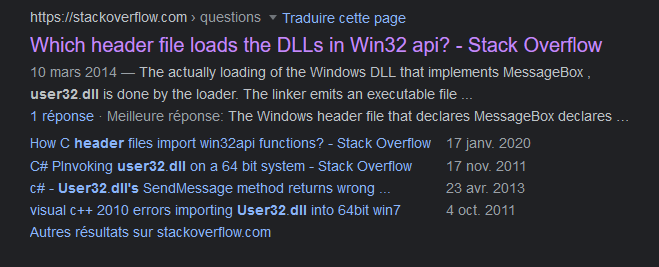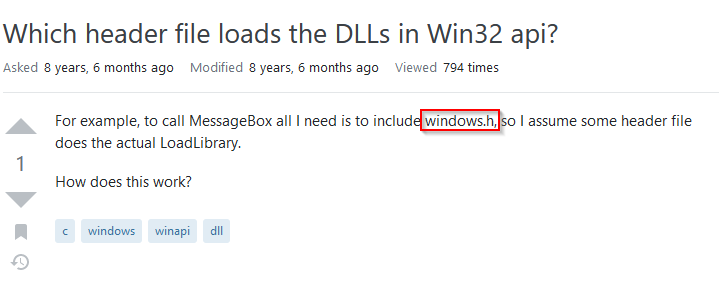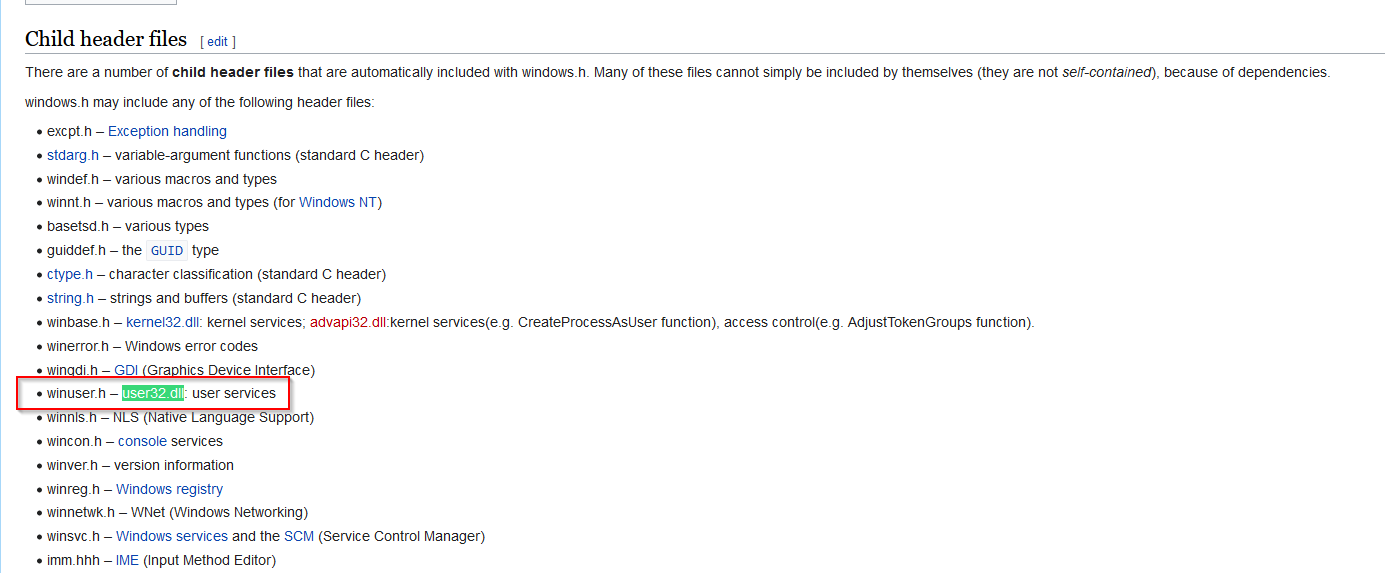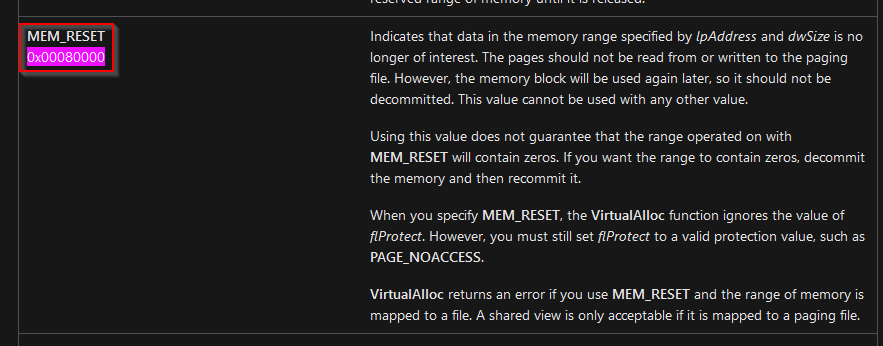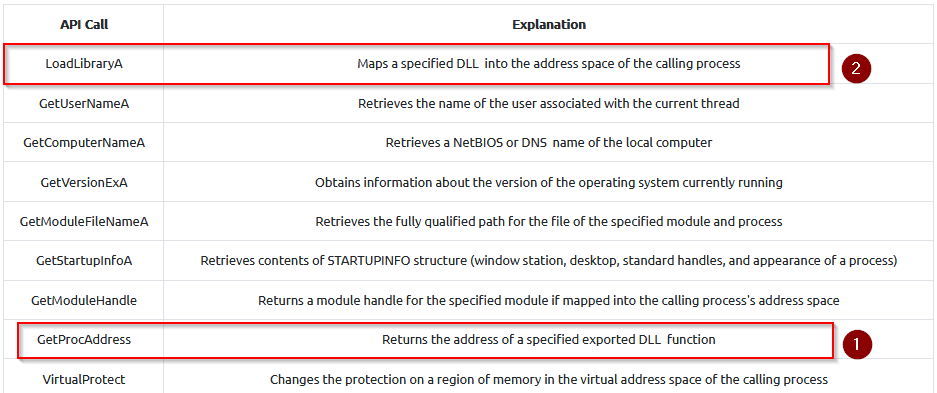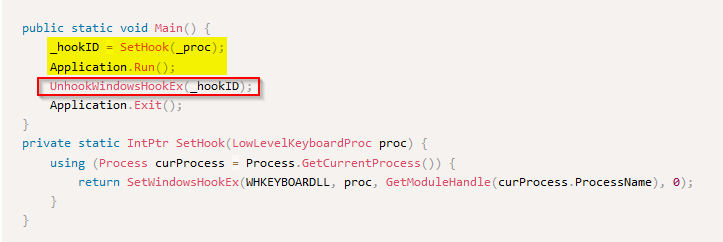Learn how to interact with the win32 API and understand its wide range of use cases
THM Room https://tryhackme.com/room/windowsapi
TASK 1 : Introduction
Read the above and continue to the next task.
No Answer
TASK 2 : Subsystem and Hardware Interaction
Does a process in the user mode have direct hardware access? (Y/N)
No, to have direct hardware access, you need to be in kernel mode.
Answer : N
Does launching an application as an administrator open the process in kernel mode? (Y/N)
No, administrator is not kernel mode either.
Answer : N
TASK 3 : Components of the Windows API
What header file imports and defines the User32 DLL and structure?
I first search for the keywords : “User32.DLL headers” on google and found a topic https://stackoverflow.com/questions/22304715/which-header-file-loads-the-dlls-in-win32-api on Stackoverflow :
This thread mention the windows.h header :
So I did a new research with this information and found the user32.dll in the Wikipedia page for Windows.h https://en.wikipedia.org/wiki/Windows.h:
Answer : winuser.h
What parent header file contains all other required child and core header files?
From previous search : windows.h
Answer : Windows.h
TASK 4 : OS Libraries
What overarching namespace provides P/Invoke to .NET?
From P/Invoke documentation from Microsoft .Net :
“P/Invoke is a technology that allows you to access structs, callbacks, and functions in unmanaged libraries from your managed code. Most of the P/Invoke API is contained in two namespaces: System and System.Runtime.InteropServices. Using these two namespaces give you the tools to describe how you want to communicate with the native component.”
Answer : system
What memory protection solution obscures the process of importing API calls?
“Each API call of the Win32 library resides in memory and requires a pointer to a memory address. The process of obtaining pointers to these functions is obscured because of ASLR (Address Space Layout Randomization) implementations; each language or package has a unique procedure to overcome ASLR. Throughout this room, we will discuss the two most popular implementations: P/Invoke and the Windows header file.”
Answer : ASLR
TASK 5 : API Call Structure
Which character appended to an API call represents an ANSI encoding?
Answer : A
Which character appended to an API call represents extended functionality?
Answer : Ex
What is the memory allocation type of 0x00080000 in the VirtualAlloc API call?
Let’s go on Microsoft documentation https://learn.microsoft.com/en-us/search/?terms=VirtualAlloc&scope=Desktop:
Then i searched for 0x00080000 code :
Answer : MEM_RESET
TASK 6 : C API Implementations
Do you need to define a structure to use API calls in C? (Y/N)
“Microsoft provides low-level programming languages such as C and C++ with a pre-configured set of libraries that we can use to access needed API calls.”
Answer : N
TASK 7 : .NET and PowerShell API Implementations
What method is used to import a required DLL?
From the example sample :
Answer : DllImport
What type of method is used to reference the API call to obtain a struct?
From TASK 4 :
Answer : External
TASK 8 : Commonly Abused API Calls
Which API call returns the address of an exported DLL function?
Answer : GetProcAddress
Which API call imports a specified DLL into the address space of the calling process?
Answer : LoadLibraryA
TASK 9 : Malware Case Study
What Win32 API call is used to obtain a pseudo handle of our current process in the keylogger sample?
From the API calls explanation we can answer the questions 1-4 :
But we can also answer this question by observing the given source code. The API call used by the “GetModuleHandle()” comes from the “curProcess.ProcessName” where the “curProcess” is the API call “GetCurrentProcess()” on a process :
Answer : GetCurrentProcess
What Win32 API call is used to set a hook on our current process in the keylogger sample?
From the source code, the API call “SetWindowsHookEx()” is our answer as it’s applying on our “curProcess.ProcessName” :
Answer : SetWindowsHookEx
What Win32 API call is used to obtain a handle from the pseudo handle in the keylogger sample?
It’s simply the definition of the “GetModuleHandler” API call.
Answer : GetModuleHandle
What Win32 API call is used unset the hook on our current process in the keylogger sample?
For the last one, we can view in the sample code in the “Main()” function that an “UnhookWindowsHookEx” API call is done after the application end running :
Answer : UnhookWindowsHookEx
What Win32 API call is used to allocate memory for the size of the shellcode in the shellcode launcher sample?
We can anwser again with the help of the definition of the API calls :
But if we analyse the source code we can see a call to a function “VirtualAlloc” which takes in parameters the size of the shellcode (“shellcode.length”) :
Answer : VirtualAlloc
What native method is used to write shellcode to an allocated section of memory in the shellcode launcher sample?
The source code shows a call to a “Copy()” function with the “shellcode” in parameter and an address space :
Answer : Marshal.Copy
What Win32 API call is used to create a new execution thread in the shellcode launcher sample?
Create functions are often named “Create[…]” so with no doubt here, the API call is “CreateThread()” and we can see it is also assigned to a variable “hthread” in the code :
Answer : CreateThread
What Win32 API call is used to wait for the thread to exit in the shellcode launcher sample?
The last call API is done on “WaitForSingleObject()” which takes the “hthread” as parameter :
Answer : WaitForSingleObject
TASK 10 : Conclusion
Read the above and continue learning!
No Answer.

